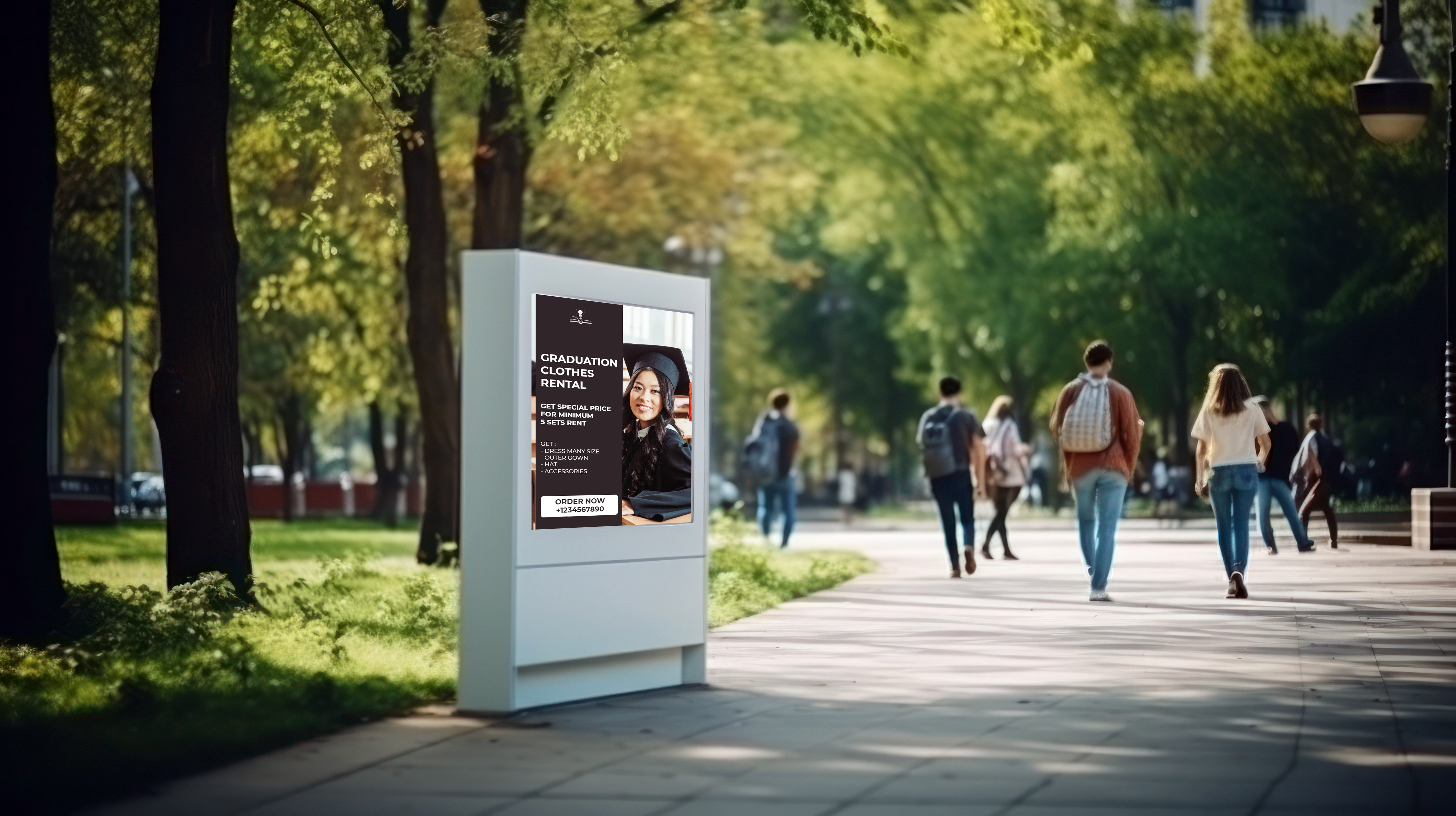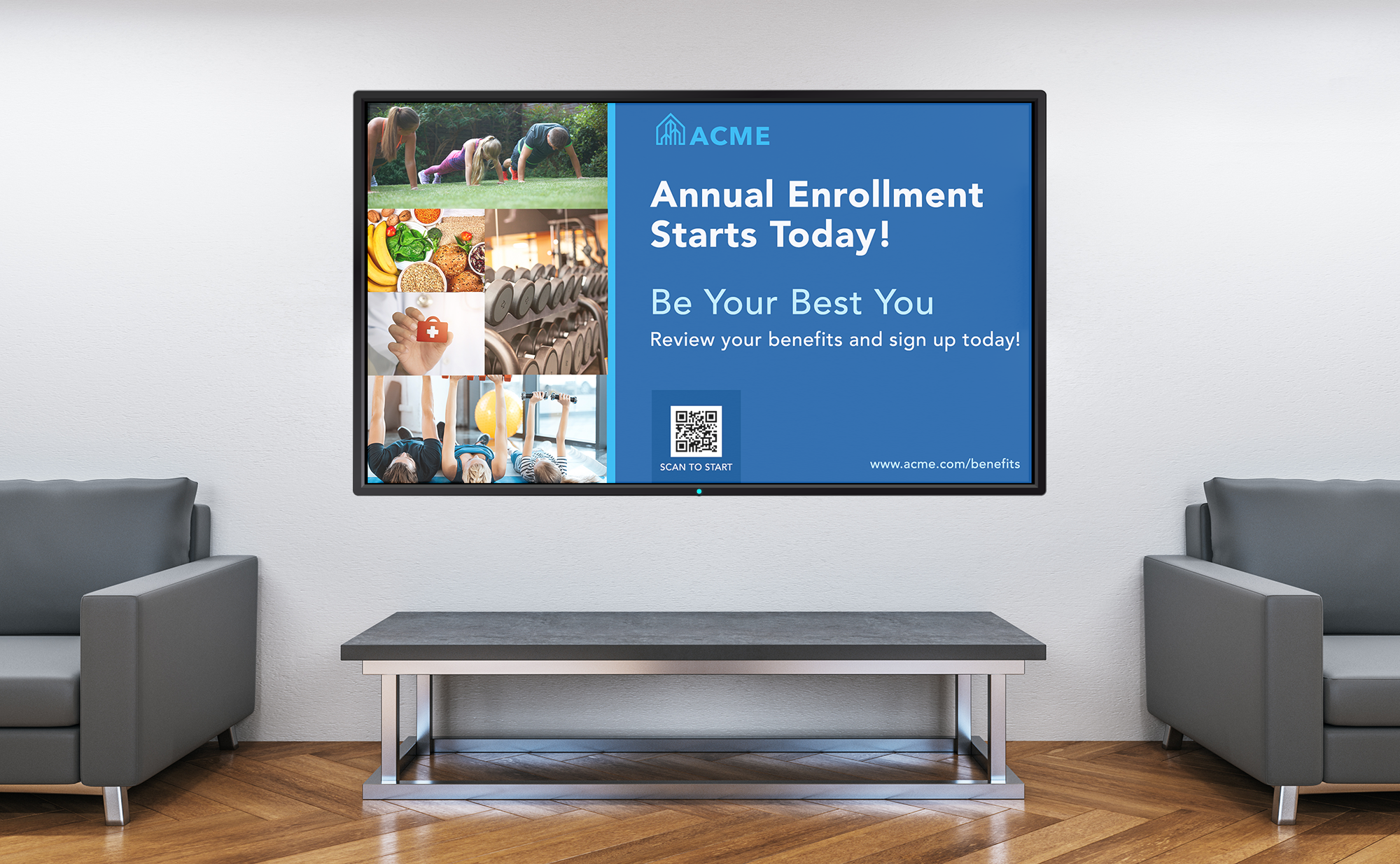By Guy Serwin
Businesses and educational institutions, in the midst of today’s competitive environment, acknowledge the crucial significance of engaging customers and learners. Emerging as a transformative force, experiential digital signage revolutionizes the interaction paradigm with signage. Its applications are diverse, from captivating shoppers in retail setups, to cultivating teamwork in corporate settings, and enabling immersive learning in educational contexts. These installations harness advanced technology to their fullest, crafting experiences that hold profound meaning and influence. The value of these encounters cannot be downplayed, as they cultivate stronger bonds between brands, organizations, and their target audiences.
 Sensors in Experiential Digital Signage
Sensors in Experiential Digital Signage
Experiential digital signage installations leverage a diverse array of sensors to create interactive and context-aware experiences. These sensors play a pivotal role in enhancing user engagement and ensuring seamless functionality across various environments. Let’s delve into the different types of sensors and their contributions to the immersive experience:
Proximity Sensors: Proximity sensors act as the digital signage’s keen senses, detecting the presence or movement of individuals in a defined distance from the sensor. By leveraging these sensors, experiential digital signage can foster deeper user interaction. When a viewer approaches the signage, the proximity sensor detects their presence, triggering a cascade of dynamic content tailored to the audience’s proximity.
Ambient Light Sensors: Ambient light sensors are the eyes of experiential digital signage, constantly assessing the lighting conditions in the surrounding environment. These sensors are crucial for ensuring optimal visibility and legibility of the displayed content. They enable the signage to automatically adjust its brightness and contrast, ensuring the content remains vivid and readable regardless of the ambient lighting. This dynamic brightness adjustment enhances the overall viewer experience, preventing glare and optimizing content visibility to captivate the audience.
Temperature Sensors: Temperature sensors serve as the guardian of experiential digital signage, safeguarding it against adverse environmental conditions. These sensors monitor the ambient temperature to ensure the signage’s optimal performance and prevent potential damage caused by extreme temperature variations. In outdoor retail settings or educational institutions with varying climates, temperature sensors play a crucial role in adjusting the signage’s internal components, like cooling systems, to maintain an optimal operating temperature.
Incorporating a combination of proximity sensors, ambient light sensors, and temperature sensors, experiential digital signage elevates the level of interaction, visibility, and resilience. By capitalizing on the power of these sensors, businesses and educational institutions can create captivating and memorable experiences that resonate with their audiences, leading to increased brand loyalty, higher customer satisfaction, and enhanced outcomes.
Beacons and Bluetooth Technology
Beacons and Bluetooth technology are instrumental in transforming digital signage into intelligent and context-aware installations. These technologies enable seamless communication and interaction between the signage and users’ devices, facilitating personalized experiences and enhancing engagement. Let’s explore how beacons and Bluetooth are leveraged in various settings:
Beacon Technology in Retail Settings:
In the realm of retail, beacons shine as a guiding light of personalized engagement. By strategically placing these small, low-energy devices throughout the store, retailers can deliver tailored offers and promotions directly to shoppers’ nearest screen. When a customer approaches a product or a specific area, the beacon triggers relevant content, such as exclusive discounts, product information, or customer reviews, creating a highly personalized shopping experience. Furthermore, beacons also play a crucial role in indoor navigation and wayfinding. They assist shoppers in finding their way through large retail spaces, guiding them to specific product categories or special promotions. This navigation aid ensures a seamless and enjoyable shopping journey, leading to increased customer satisfaction and improved sales conversion rates.
Bluetooth Connectivity in Corporate Environments:
In the corporate world, Bluetooth technology empowers experiential digital signage to become an interactive platform for employee engagement. By enabling Bluetooth connectivity, digital signage can seamlessly communicate with employees’ smartphones, wearable devices. This integration allows employees to interact with the signage, participating in surveys, polls, or accessing relevant information. For example, in an office lobby, employees can use their smartphones to engage with the digital sign, providing feedback on corporate events or accessing the day’s agenda. This two-way communication fosters a sense of inclusivity and involvement, bolstering employee satisfaction and reinforcing corporate culture.
Education Applications of Bluetooth in Digital Signage:
Throughout the halls of higher learning, Bluetooth technology paves the way for dynamic and interactive learning experiences. By incorporating Bluetooth connectivity into digital signage on campuses, educational institutions can enable students to engage with the signage using their smartphones or tablets. Students can access supplementary course materials, interactive quizzes, or multimedia content related to their studies. This interactive approach fosters active learning and knowledge retention, making the learning process more engaging and effective. Moreover, Bluetooth integration allows digital signage to interact seamlessly with educational apps, further enriching content delivery and providing students with comprehensive learning resources.
Harnessing the potential of beacons and Bluetooth technology, experiential digital signage enhances user experiences in retail, corporate, and educational settings. The personalized and interactive nature of these technologies cultivates stronger connections between brands, organizations, and their audience, ultimately leading to increased customer loyalty, employee satisfaction, and improved educational outcomes.
Optics
Optics play a pivotal role in the realm of sensors and beacons, enhancing interactivity and functionality. In this context, optics refer to the use of light and its properties to enable communication, sensing, and interaction between devices and the surrounding environment. Sensors and beacons often incorporate optical components to achieve various goals:
- Proximity Sensing: Optics are used to create proximity sensors that can detect the presence or absence of objects within a certain range. By emitting and receiving light signals, these sensors can determine the distance between the sensor and the object, enabling touchless interaction or triggering specific actions when an object comes within range.
- Gesture Recognition: Optics enable sensors to recognize hand gestures and movements. By analyzing the way light reflects off or is blocked by moving hands, devices can interpret gestures as commands, enabling intuitive control of various applications and devices.
- Light Sensors: Photodetectors and light sensors use optics to measure the intensity of light in the environment. These sensors are used in applications such as automatic brightness adjustment for displays, ambient light detection, and even in photography.
- Beacon Communication: Beacons, which emit signals to nearby devices, can utilize optical components to transmit information. For instance, some beacons use light signals to communicate with smartphones or other devices, enabling location-based services, navigation, and information dissemination.
- Barcode and QR Code Scanning: Optical sensors are often used in barcode and QR code scanners. These sensors read the pattern of light and dark regions on the code, translating it into meaningful information like product details or URLs.
- Interactive Displays: Optics enhance interactive displays by enabling touch and gesture recognition. Light-based technologies like infrared grids or capacitive touchscreens allow users to interact with displays through touch or proximity.
- Optical Communication: In some cases, sensors and beacons utilize light for communication, especially in scenarios where radio frequency communication might be impractical. Optical communication methods, such as using infrared signals, can enable short-range data transfer between devices.
Overall, optics bring a layer of sophistication to sensors and beacons by leveraging light’s properties to enable nuanced interactions, enhance data collection, and facilitate communication in diverse applications.
The Path Forward is Experiential
Sensors, beacons, and optics have collectively breathed life into what was once static signage. Sensors have endowed digital displays with the ability to perceive and respond to the presence and actions of individuals, forging dynamic interactions. Proximity sensors, ambient light sensors, and temperature sensors have coalesced to craft experiences that are not only personalized but resilient and adaptable to the surrounding environment.
The path forward is clear, businesses and educational institutions stand to reap substantial benefits by embracing experiential signage. The engagement potential of these technologies is immense, allowing brands to establish deeper connections with their customers and learners to absorb knowledge in innovative ways. Experiential digital signage isn’t just about captivating visuals; it’s about fostering memorable experiences that resonate long after the encounter.









